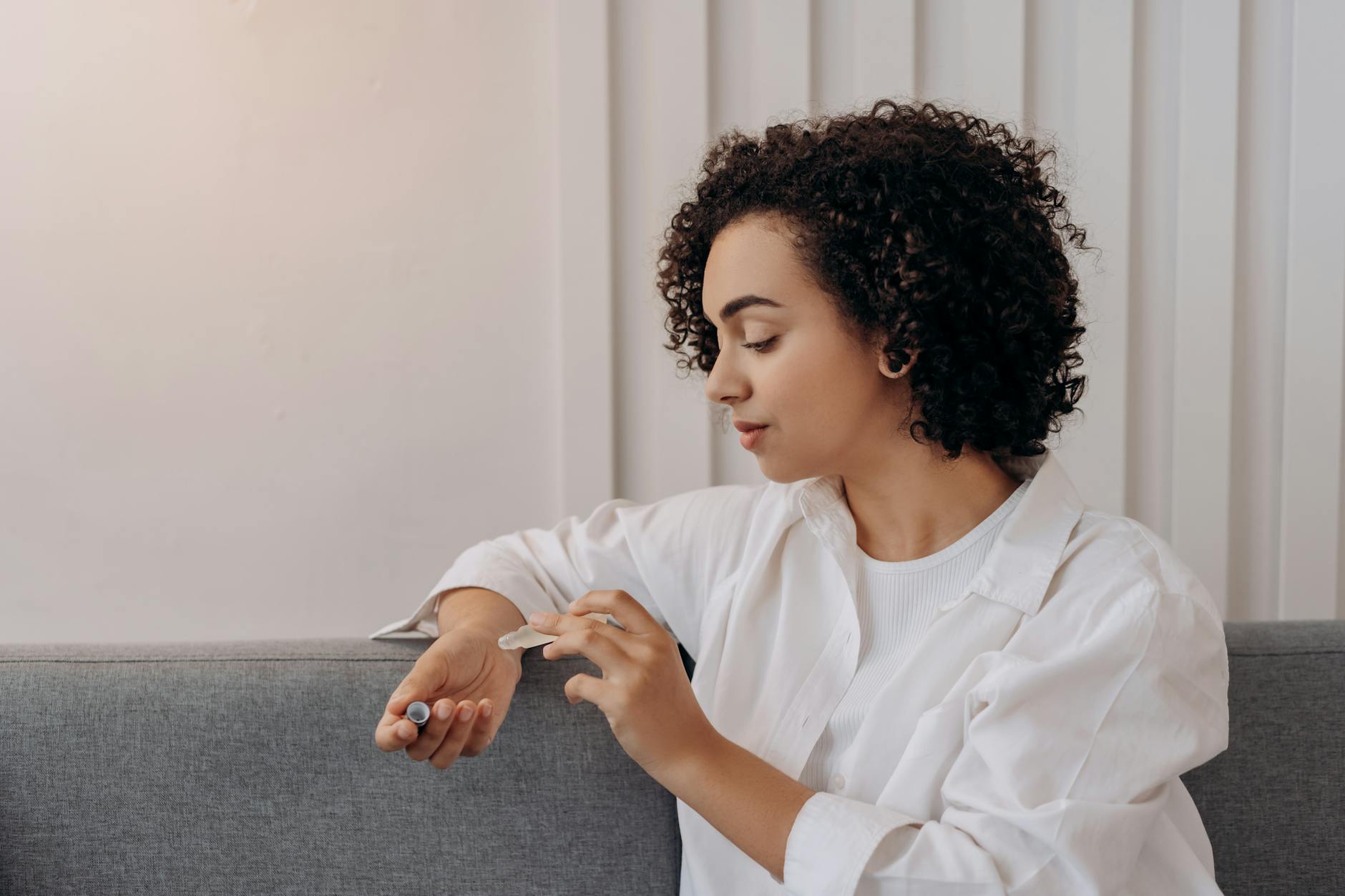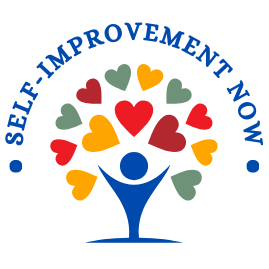How to Overcome Anxiety: 10 Effective Strategies
Anxiety doesn’t have to control your life. These days, with stress coming at us from every angle, anxiety feels like a constant, unwelcome companion. If you’ve felt the tightening grip of anxiety, you’re not alone. We’re in a time when finding real ways to overcome anxiety is more crucial than ever. This post lays out ten practical, effective strategies to help you manage anxiety and regain control of your life.
From deep breathing to seeking professional help, we’ll cover a range of approaches you can start using today. Whether anxiety sneaks up on you at work or refuses to let you sleep at night, these solutions are your toolkit to handle those moments with confidence.
Understanding Anxiety
Anxiety is something many people experience, but understanding its nature, symptoms, and impact can help those affected take mindful steps toward overcoming it. Whether it’s a fleeting worry or a deep-seated panic, learning about anxiety can be the first step toward regaining control of your life.
 Photo by Mikhail Nilov
Photo by Mikhail Nilov
What is Anxiety?
Anxiety is a normal and often healthy emotion. However, when a person regularly feels disproportionate levels of anxiety, it might become a medical disorder. According to the National Institute of Mental Health (NIMH), anxiety disorders form a category of mental health diagnoses that lead to excessive nervousness, fear, apprehension, and worry.
Symptoms of Anxiety
Recognizing the symptoms is crucial. Anxiety can manifest in several ways. Here’s what to look out for:
- Emotional Symptoms: Restlessness, difficulty concentrating, irritability, and a constant feeling of being on edge.
- Physical Symptoms: Increased heart rate, sweating, trembling, or feeling weak and tired.
These symptoms can interfere with daily activities such as job performance, schoolwork, and relationships.
Causes of Anxiety
The exact cause of anxiety is not always clear. However, a mix of factors often contributes, including:
- Genetics: Anxiety can run in families.
- Environment: Stressful or traumatic life events may trigger anxiety in people who are already prone to it.
- Brain Chemistry: Imbalances in certain neurotransmitters play a part in how the brain regulates feelings, including anxiety.
For more detailed insights into anxiety’s causes, you can explore resources like Mayo Clinic’s Overview.
Impact on Daily Life
Anxiety can affect every aspect of life. From disturbing sleep patterns to hampering social interactions, its presence can be overwhelming. Have you ever felt paralyzed by the idea of going to a social event or tackling a deadline at work? Anxiety pulls us into a loop of worry that can sometimes seem never-ending.
- Relationships: Anxiety may cause you to become withdrawn, snapping at loved ones or avoiding social gatherings.
- Work and Education: It can lead to procrastination, a lack of focus, or even complete burnout.
By understanding anxiety and its wide-reaching implications, you’re better prepared to acknowledge it—not as a vague feeling but as something tangible and defeatable. For methods on how to overcome anxiety, check out this useful guide from Healthline that includes helpful tips and strategies.
Embrace this knowledge as a tool. Because once you understand anxiety, the path to overcoming it becomes less intimidating and more of an achievable goal.
Breathing Techniques to Calm Anxiety
When anxiety strikes, it can feel like you’re caught in a storm, unable to find your way out. Fortunately, breathing techniques can be your anchor in the chaos. These methods can help you regain control and calm the mind. Let’s explore a few effective techniques that can assist in overcoming anxiety.
Deep Breathing
Deep breathing is like hitting the reset button on your stress levels. It involves taking slow, deep breaths, which help to signal to your body that it’s time to relax. To practice deep breathing, follow these steps:
- Find a comfortable and quiet place to sit or lie down.
- Close your eyes if you feel comfortable.
- Inhale deeply through your nose, allowing your stomach to expand.
- Hold the breath for a moment.
- Slowly exhale through your mouth.
- Repeat this cycle for a few minutes.
This method is as simple as it sounds and can make a world of difference. It’s a fantastic tool to have at your disposal when anxiety creeps in.
The 4-7-8 Technique
The 4-7-8 technique is often referred to as a “natural tranquilizer for the nervous system.” It’s a bit like counting sheep when you’re trying to fall asleep, only more structured. Here’s how you can practice it:
- Sit or lie down comfortably.
- Close your eyes and relax.
- Inhale gently through your nose for a count of four.
- Hold your breath for seven counts.
- Exhale slowly through your mouth for eight counts.
- Repeat the cycle three more times.
This technique requires a bit of practice, but it can be incredibly rewarding. It’s especially useful before bed to help you drift into a peaceful sleep.
 Photo by RDNE Stock project
Photo by RDNE Stock project
Equal Breathing
Equal breathing, or “Sama Vritti,” focuses on making your inhales and exhales the same length. It’s like balancing a scale, helping you to find equanimity. Here’s a step-by-step guide:
- Sit in a comfortable position with your spine straight.
- Close your eyes and take a deep breath in through your nose for a count of four.
- Exhale through your nose for a count of four.
- Continue to breathe in and out for equal counts, gradually increasing the count as you become more comfortable.
By practicing equal breathing, you’ll find a sense of calmness and stability returning to your life.
For additional resources on how to overcome anxiety through breathing techniques, check out this guide on breathing exercises for anxiety. It provides a variety of techniques and insights into how you can apply them in your day-to-day routine.
Physical Activity and Anxiety Management
Finding ways to manage anxiety can feel like wandering through a maze without a map. But physical activity is a trusty compass that can guide you toward calmer days. Whether it’s breaking a sweat with endorphin-boosting workouts or finding your zen through yoga, exercise is a powerful tool to keep anxiety at bay. Let’s explore why getting up and moving might just be the best remedy for those anxiety blues.
The Importance of Routine
Imagine starting every day without a clue of what’s coming next. Sounds a bit chaotic, right? A daily routine is like a well-oiled machine that runs smoothly and reduces feelings of uncertainty, which is often a big contributor to anxiety. Not sure where to start?
- Begin your day with a glass of water. This simple act can be grounding.
- Move around outside. A short walk can set the tone for the day.
- Practice gratitude. Take a moment for reflection and to appreciate the present moment.
These small yet effective habits can shape a routine that provides structure and predictability. According to the Better You article, creating a schedule that includes specific activities at set times can be incredibly beneficial. A structured routine doesn’t just keep you organized but also allows you space to breathe and refocus.
Exercise as a Tool for Managing Anxiety
Engaging in regular physical activity isn’t just about keeping fit. It’s a mental health boost too. When you exercise, your brain releases endorphins, which are natural mood lifters. It’s like nature’s own antidepressant.
Different types of exercises are particularly beneficial, including:
- Aerobic Workouts: Activities like running, swimming, or cycling increase your heart rate and boost your mood. They’re science-backed ways to help on your journey to learn how to overcome anxiety.
- Yoga: This practice combines movement, meditation, and breathing exercises. It’s no wonder yoga is often recommended for managing anxiety as it helps calm the mind and body.
- Strength Training: Lifting weights isn’t just about building muscle. It also builds resilience and self-esteem, which can be a major anxiety buster.
The benefits of exercise aren’t limited to just the body. According to Health Harvard, moving your muscles reduces tension and consequently lowers feelings of anxiety. It’s a win-win situation!
So, lace up those sneakers, roll out a yoga mat, or simply take that first step. Your mind and body will thank you. It’s time to turn anxiety into just a page in yesterday’s book—now let’s keep moving toward a healthier you.
Mindfulness and Meditation Practices
Finding peace in a world that feels like it’s constantly moving is tough. But mindfulness and meditation can be powerful tools in helping you learn how to overcome anxiety. Imagine your mind as a calm, clear pond. When you practice meditation, you’re skimming away the tossed pebbles of stress and letting your thoughts settle. It’s about being present, and there’s no need for incense or chanting – just you, your breath, and a moment of quiet.
Guided Meditations and Apps
Not everyone knows where to start when it comes to meditation, and that’s okay. Luckily, there are plenty of guided meditations and apps to help you build a meditation habit that sticks. These resources can make the process of calming your mind as easy as pressing play.
- Headspace: This app is a great starting place for anyone looking to bring mindfulness into their life. With courses crafted by experts, it’s like having a meditation teacher in your pocket.
- Calm: Known for its soothing sounds and variety of guided sessions, Calm can help you lull your mind into a state of restfulness.
- Insight Timer: It’s more than just a timer; Insight Timer boasts a huge library of free meditations suitable for any anxiety level.
- Mindfulness.com: With rich content, from guided meditations to mindfulness courses, this is an excellent resource to train your brain to stay present.
These tools can act as your coach, guiding you toward a more serene headspace with ease. They harness the power of modern technology to bring ancient practices into our everyday lives.
By using these resources, you’re not just finding mindfulness; you’re learning how to tap into it whenever the world starts to feel overwhelming. Like a flashlight in the dark, guided meditation apps can shine a light on the path to calming your mind and overcoming anxiety.
 Photo by Mikhail Nilov
Photo by Mikhail Nilov
Cognitive Behavioral Techniques
Anxiety can feel like a thick fog that never lifts. But Cognitive Behavioral Therapy (CBT) offers essential tools that help clear a path through it. CBT is all about changing those pesky thoughts that spiral out of control and create anxiety. Think of it as a mental workout where you learn to challenge and change negative thought patterns. Many people struggling with anxiety wonder how to overcome it effectively. CBT provides strategies that help turn that wondering into action by focusing on thought patterns and behaviors.
Journaling for Anxiety Relief
 Photo by RDNE Stock project
Photo by RDNE Stock project
Journaling can be your best friend when it comes to anxiety relief. Imagine your journal as a trusty sidekick, ready to help you process emotions and reduce stress. By scribbling down your thoughts, you get a chance to unpack them. It’s like untangling a knotted necklace, where each loop represents a nagging worry or fear.
Here’s how journaling can help:
- Expression and Reflection: Pouring your heart into paper allows you to express what’s bottled up inside. It’s a bit like speaking to a non-judgmental friend who listens quietly. Pausing to reflect on what you’ve written can help uncover patterns and triggers, giving you insights into what sparks your anxiety. According to Verywell Mind, journaling is a highly recommended stress-management tool, which can lessen feelings of distress and increase self-awareness.
- Clearing Mental Clutter: Writing can clear your mind, making room for peaceful thoughts. We often find that articulating what’s swirling in our brains helps make things less overwhelming.
- Tracking Progress: Over time, you’ll notice changes in your thoughts and behaviors. Reflecting on previous entries can show how far you’ve come, serving as a testament to your growth and resilience.
Journaling not only captures your emotions but also serves as a roadmap guiding you through the labyrinth of anxiety. Next time you feel overwhelmed, grab a pen and let your thoughts flow. You might find it’s not just a tool for relief but a mirror reflecting your inner world.
For more on how to incorporate journaling into your routine, check out Medical News Today for some insightful tips.
The Role of Nutrition in Mental Health
Nutrition is not just about shaping our bodies. It plays a critical role in how our minds work too. Feeling stressed or anxious? Sometimes the answer to “how to overcome anxiety” might be right on your plate. Our brains, like cars, need the right fuel to run smoothly. Let’s dive into how what you eat and drink can greatly impact your mental well-being.
Hydration and Caffeine Intake
 Photo by Markus Winkler
Photo by Markus Winkler
Water might not be the first thing that comes to mind when thinking of mental health, but it’s vital. Staying hydrated can actually help reduce anxiety. According to Dehydration and Anxiety: Understanding the Connection, dehydration can lead to mood changes and increased anxiety levels. Imagine trying to run a race with no energy—it’s much the same for your brain when it lacks water.
Now let’s talk caffeine. It’s a double-edged sword. While a cup of coffee can jump-start your day, overdoing it can lead to jitteriness and heightened anxiety. Think of caffeine like a friend who talks too fast and too much—occasionally fun but often exhausting. Balancing hydration with a moderate caffeine intake can provide the mental clarity and calmness your body craves.
To tie this all together, consider these simple tips:
- Drink a glass of water first thing in the morning: Your body loses water overnight, so replenishing is key.
- Limit caffeine consumption: Try to stick to no more than 2-3 cups of coffee daily.
- Listen to your body: Notice how different drinks affect your mood and adjust accordingly.
Remember, it’s not about eliminating caffeine entirely but finding a balance that supports a peaceful mind.
Seeking Professional Help
When anxiety is like a storm cloud you can’t seem to shake, seeking professional help might just be your rainbow. It’s not about giving up; it’s about having the courage to find support. Many people think they can deal with anxiety alone, but sometimes, a little help is all you need to get back on track.
 Photo by Tima Miroshnichenko
Photo by Tima Miroshnichenko
Therapy Options
Therapists are like the expert guides on your journey toward overcoming anxiety. They know the terrain and can help you navigate through it. There are several types of therapy available:
- Cognitive Behavioral Therapy (CBT): This helps you change negative thought patterns and can be quite effective in dealing with anxiety.
- Dialectical Behavior Therapy (DBT): Useful for those who need to handle stress through mindfulness and emotion regulation.
- Acceptance and Commitment Therapy (ACT): Encourages accepting emotions rather than fighting them, increasing psychological flexibility.
These therapies are not just talk; they give you tools to live your life better.
Medication Options
Sometimes therapy alone isn’t enough, and medication becomes a vital part of how to overcome anxiety. It’s not about becoming reliant on drugs, but finding a chemical balance that lets you thrive. According to Medical News Today, the primary medications include:
- Selective Serotonin Reuptake Inhibitors (SSRIs): Like Prozac and Zoloft, which are often the first-line treatment.
- Serotonin and Norepinephrine Reuptake Inhibitors (SNRIs): Such as Effexor, offering a different approach to anxiety management.
- Benzodiazepines: These provide quick relief but are used cautiously due to their addictive nature.
Each option has its pros and cons, and only a healthcare professional can determine the best fit for you.
When to Seek Help
But when should you raise the flag and ask for help? If anxiety is stopping you from doing the things you love, it might be time. Highland Springs Clinic emphasizes that seeking help is not a weakness but a step towards healing. Don’t wait until anxiety becomes the boss of your life; take control and find the support you deserve.
Seeking professional help can sometimes feel daunting, but remember, it’s one of the most empowering steps you can take. Success is a journey, and you’re not alone on this path.
Conclusion
Overcoming anxiety isn’t about a quick fix; it’s a journey, and it’s personal. You’ve got 10 powerful ways at your disposal now. Getting a handle on your anxiety means appreciating the small wins, being patient, and allowing these strategies to become part of your daily life.
Don’t just skim through the list. Take one or two tips and put them to test today. Notice what works and adjust as needed.
Be open and honest with yourself. Reflect and see what changes you can make tomorrow to build a steady path to peace. Keep pushing forward, and never hesitate to reach out for help if you need it.
Your journey to overcome anxiety is yours to own.




